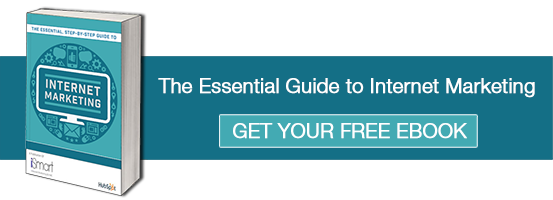
Easy Steps to Measure the Effectiveness of Your Marketing Campaigns
September 25, 2025
How to Convert Your Website Visitors into Sales Leads
September 25, 2025
Lead nurturing is the process of developing relationships with your potential customers by sending targeted, relevant, and valuable messages to them in a timely manner.
“The end goal is to get your leads to “raise their hand” and self-select into further engaging with your business”.
As a marketer, you know that getting leads is fantastic – but not all leads are at the point where they can be considered sales-ready.
First thing you need to do is:
- Take a look at your existing sales funnel.
- How long does it typically take for a lead to become a customer after his or her first inquiry?
- Does the sales cycle vary for different types of purchases?
Equipped with the answers to these questions, you can build some effective lead nurturing campaigns and leverage this marketing channel to qualify leads for your sales team.
Let’s have a look at the best practices of Email Marketing:
In addition to nurturing your leads through targeted email messages, you should also be looking at the larger email marketing picture, which includes growing your database, closely following key metrics, and increasing conversions.
- List Building
One of the biggest challenges for marketers is to create opt-in opportunities.
- Make sure your lead forms allow your website visitors to enter their email address and opt-in to receive your messages.
- Give them a reason to opt-in. What’s so valuable about your emails? What interesting and unique information will they receive in your email newsletter? Be explicit and phrase the benefits in a way your audience will understand.
- Only send messages to people who have explicitly opted in. You can follow the extreme principle of Seth Godin’s “permission marketing”: would your recipient be upset if they didn’t receive your message? If yes, you should go ahead and send your email.
- Send emails that are relevant to the interests of your contacts.
- Be personal in your communication. Use a real email sender name and add a personal signature. Personalize the message so that the recipient remembers how and why they came to your website.
- Make sure that your message adds value. Get into the mind of your recipients and ask, “what’s in it for me?” Are you emailing them just to tell them how great your product is? Or are you offering to help them solve a problem? Make the value clear in the email body and subject line.
- Don’t rely on images, as some email clients don’t load images automatically, so if your email is one large image, your recipient might not have any idea what it’s about!
- Be consistent in your communication to set the right expectations in recipients. Whether you send your messages daily, weekly, or monthly, pick a schedule and stick to it.
- (Re)Converting
Each one of your marketing messages should have a goal. Make it clear what recipients are supposed to do once they open your email.
If your goal is lead generation, include a call-to-action that links to a landing page, on which the recipient can reconvert and self-select to further engage with your company. But these subscribers are already existing leads for my business, you might object. Then, inform them about product-centric offers and let them qualify themselves as more sales-ready. If they are not ready to commit yet, continue nurturing them with broader offers to stay on top of their mind. Remember, the landing page is part of your email campaign. Email marketing doesn’t stop with a click. Your landing page is an extension of your email, and it is where your conversion takes place.
Make sure your email offer and landing page are well aligned, using similar language and images.
- Measuring Email Performance
- Click-through rate (CTR) – Click-through rate measures response: how many of the people you emailed clicked on your link(s)? The CTR can give you a sense of how compelling your offer and email messages are. Experiment with different offers, subject lines, calls-to-action, and timing to improve your email CTR.
- What about open rate? Open rate is an unreliable metric, as major email clients do not load the images necessary for tracking who opened an email. Instead of worrying about open rate, focus on the number of clicks your emails receive.
- Unsubscribe Rate – Unsubscribe rate measures the percentage of recipients who opted out of your email communications. As with open rates, the unsubscribe rate isn’t a reliable picture of your email list’s health. Many subscribers won’t bother to go through the formal unsubscribe process but will just stop opening, reading, and clicking on your messages
How to measure conversions:
Measure how many of those clicks turned into reconversions on your landing page. It’s the ultimate measure of an email campaign’s effectiveness. The higher your conversion rate, the more relevant and compelling the offer was to your audience.
However, conversion rates are dependent on factors beyond the original email message, such as the quality of your landing page. Test different landing pages to improve the conversion on your website.
Remember: Nurturing your contacts doesn’t have to be limited to email communications. After all, you can communicate with your leads via social media or other platforms they use. That is why you should also start thinking about behaviour-driven communications, and how to reach out to your leads based on your interactions with them.



